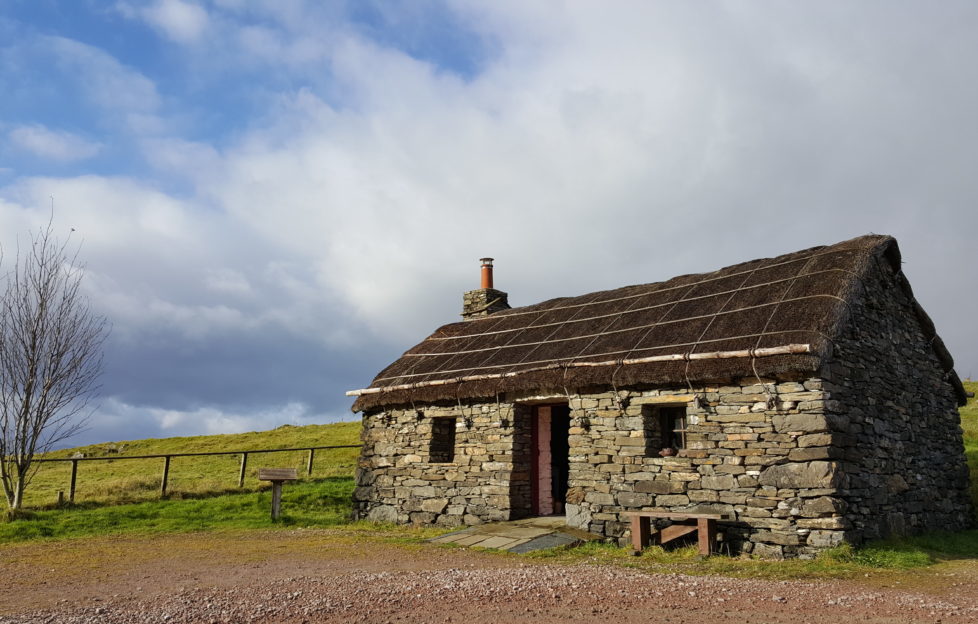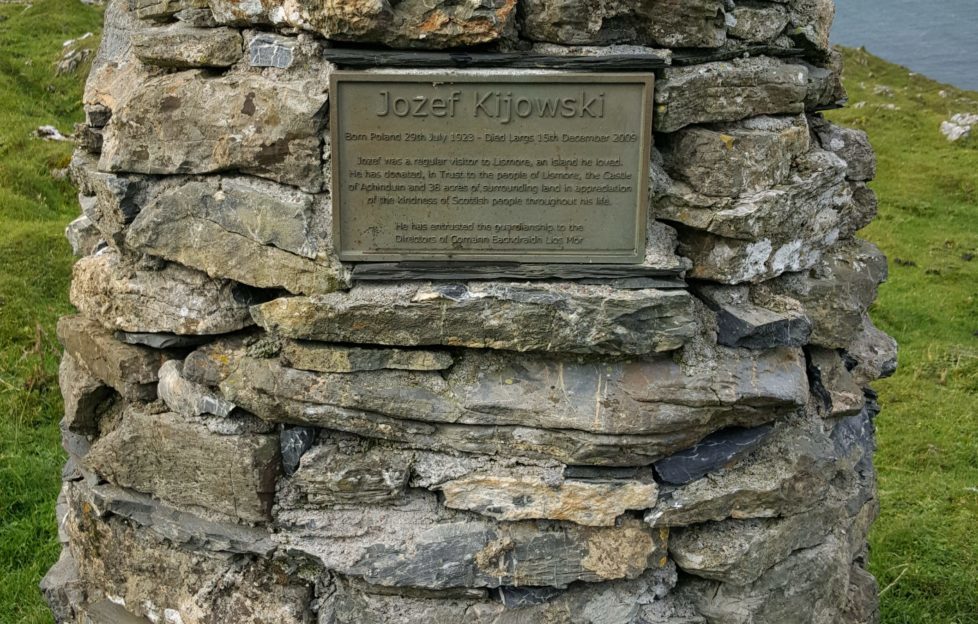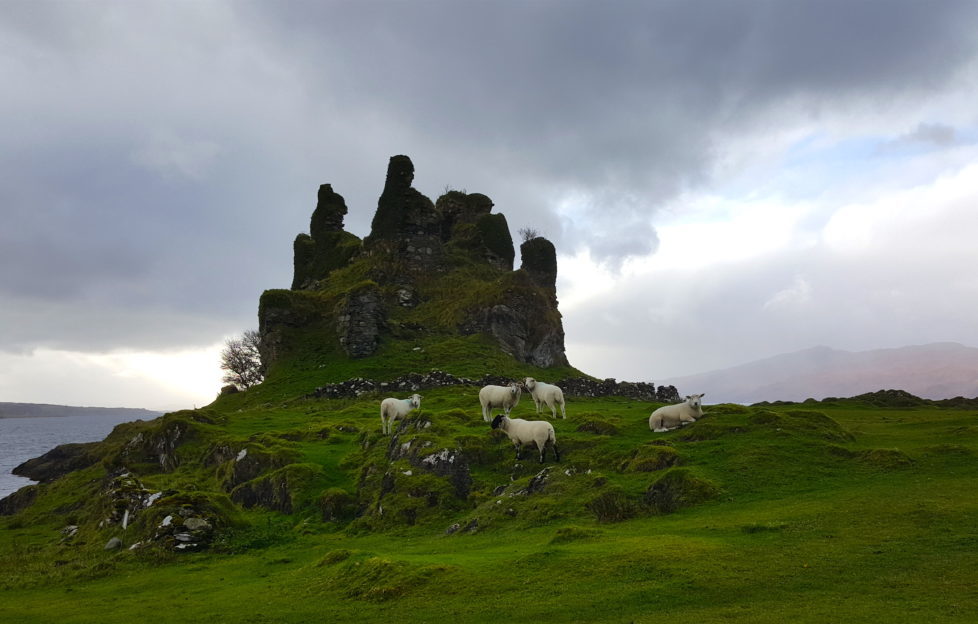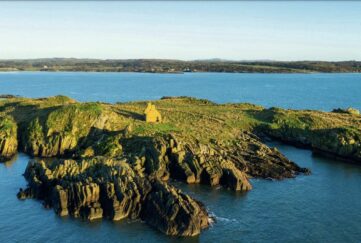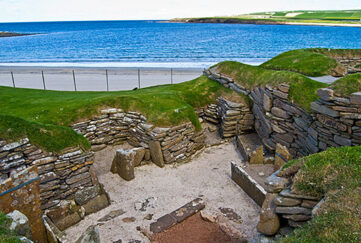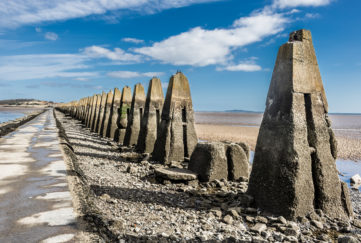Scotlanders | The Isle Of Lismore
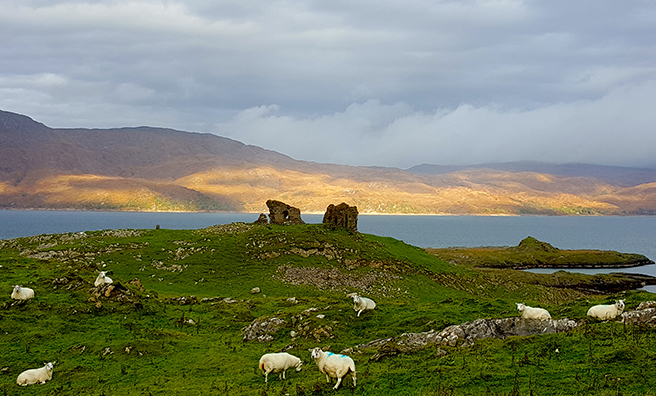
Talk about a small place with a big impact.
On its 9.1 square miles of land – much of it
rocky and used only for grazing – the Isle of
Lismore holds out-of-proportion surprises.
Visiting Lismore feels a bit like cheating. You get views worthy of the uttermost reaches of the Highlands all a mere 50-minute ferry from Oban.
Wedged between Appin and Morvern, Lismore lies in what I call Scotland’s ‘castle corridor’, an area comprising the Sound of Mull and Firth of Lorne guarded by a cluster of castles including Duart, Dunstaffnage and Ardtornish.
The isle boasts three spectacularly rugged ruins of its own, those of Castle Coeffin, Achanduin Castle and Tirefour Broch, all of which give distinct Game of Thrones vibes.
And no wonder – this is the former domain of the Lords of the Isles, after all.
I explored Lismore by bike – a novel and relatively unchallenging way to navigate its undulating paths.
With only one main road running up and down its length, it’s also nearly impossible to get lost!
The true joy, then, is taking comfort in the island’s accessibility enough to focus on what you discover along the way.
From the ferry terminal I veered southwest towards Achanduin over the island’s more rugged southern half.
I was expecting a castle and was not disappointed, but I was not expecting my heart strings to be pulled when I got there.
A cairn at the castle stands in tribute to a Polish immigrant, Jozef Kijowski, who donated the castle and 38 acres of surrounding land to the people of Lismore “in appreciation for the kindness of Scottish people throughout his life.”
As an immigrant to these shores myself who has come to call them home, this poignant reminder of Scotland’s hospitality will stay with me for a very long time.
St Moluag’s Cathedral
Perhaps the island’s biggest surprise is that it once boasted a cathedral. One is inclined to ask where it could fit, yet it’s true. St Moluag’s Cathedral once hosted great gatherings of Islesmen in an age when the best way to get around was not by land, but by water.
Only the nave of the old cathedral survives in the modern church, still used by the community, and there is also a fine open-air collection of carved gravestones on the grounds.
Then there’s Castle Coeffin itself. Sprouting from atop a coastal crag in ruinous spires that resemble a battered crown, it is amongst Scotland’s most primally evocative castles.
It also affords views across to Glensanda, home to yet another castle and Europe’s largest granite super quarry.
Alas there was a ferry and train to catch so I could not explore Lismore’s entire breadth. I suspect that many visitors make my mistake of thinking they can do Lismore in a day.
It’s technically possible, but like a fine single malt drunk with haste it will leave you longing for more time to get to know it better.
Catch more of David’s adventures on his blog,
on Twitter, and on Instagram.
- This replica 19th century Cottar’s Cottage at the Heritage Museum is popular with visitors.
- Lismore coos!
- The ruins of Castle Coeffin


